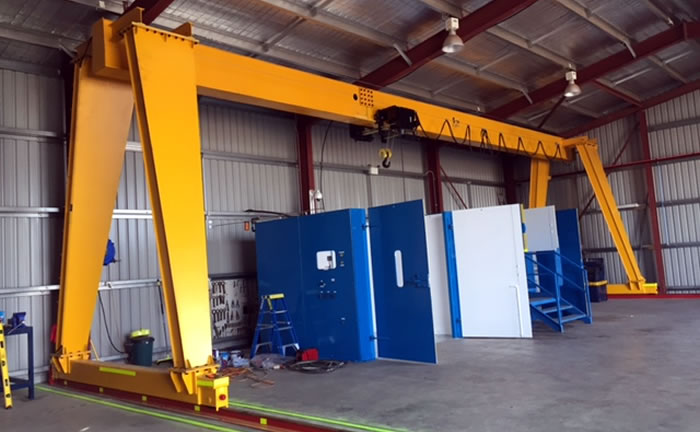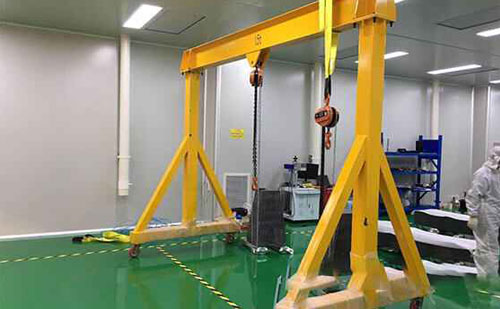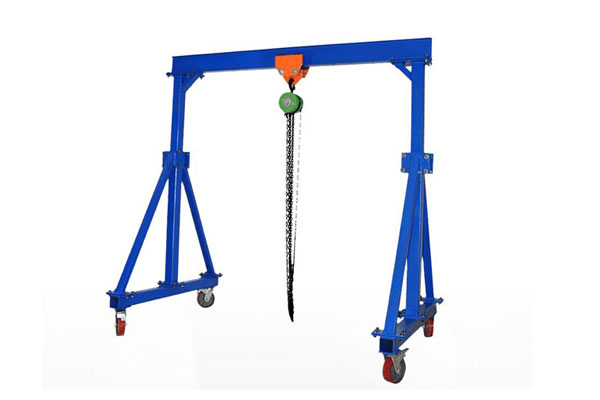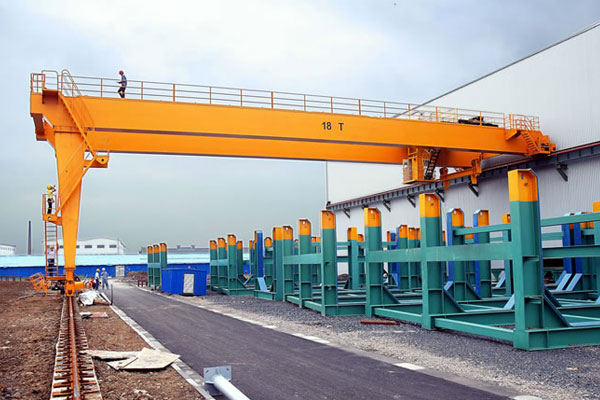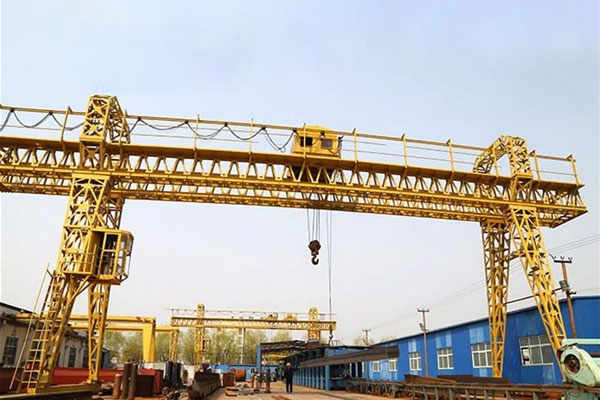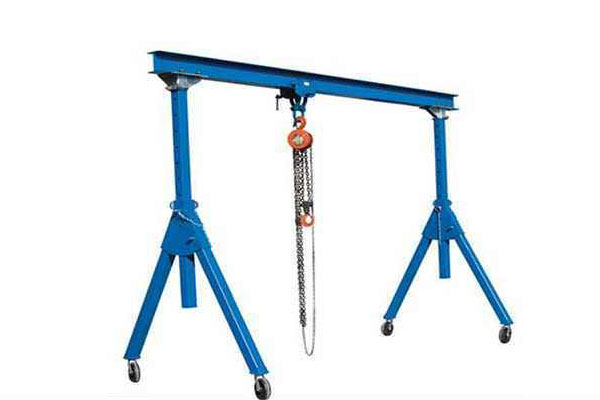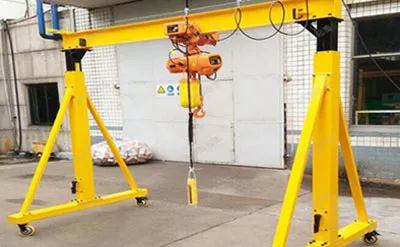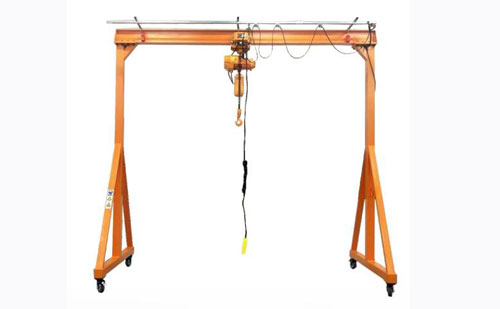Maximize Efficiency: Choosing the Right 2 Ton Gantry Crane for Your Facility
1. Assess Your NeedsLoad Requirements: Confirm that your loads do not exceed 2 tons.
Lift Height: Determine the maximum height you need to lift your loads.
Span Width: Measure the distance between the supports where the 2 ton gantry crane will operate.
2. Type of Gantry CraneAdjustable vs. Fixed: Adjustable 2 ton gantry crane offer flexibility in height and span, while fixed cranes provide stability for specific tasks.
Portable vs. Stationary: Portable 2 ton gantry crane are useful if you need mobility; stationary ones are ideal for dedicated tasks.
3. Material and ConstructionSteel vs. Aluminum: Steel is stronger and more durable, while aluminum is lightweight and portable.
Finish and Corrosion Resistance: Consider coatings or treatments that protect against rust and wear, especially in harsh environments.
4. Mobility and ManeuverabilityWheels: Ensure the wheels are suitable for your floor surface and can handle the load without damaging the floor.
Brake Systems: Reliable brakes are essential for safety and control during operation.
5. Assembly and MaintenanceEase of Assembly: Look for 2 ton gantry crane that are easy to assemble and disassemble, especially if mobility is a factor.
Maintenance Requirements: Choose models with accessible parts for easier maintenance and servicing.
6. Safety FeaturesLimit Switches: These prevent over-lifting and help maintain safe operational limits.
Stability and Weight Distribution: Ensure the design provides adequate stability to prevent tipping.
7. Budget ConsiderationsInitial Cost vs. Long-term Value: While it might be tempting to choose the cheapest option, consider long-term durability and efficiency.
Warranty and Support: A good warranty can save costs on repairs and parts.
Choosing the right 2 ton gantry crane involves careful consideration of your specific needs and operational environment. By evaluating factors such as load requirements, mobility, construction material, safety features, and budget, you can select a 2 ton gantry crane that maximizes efficiency and enhances productivity in your facility.
Safety First: Essential Features to Look for in a 2 Ton Gantry Crane
1. Stability and Design
Wider Base: A broader base provides better stability, reducing the risk of tipping.
Low Center of Gravity: Ensure the design maintains a low center of gravity for enhanced stability.
2. Load Limit Indicators
Built-in Load Limiters: These prevent the 2 ton gantry crane from lifting loads that exceed its rated capacity, minimizing risk of overload.
3. Braking Systems
Reliable Brakes: Look for 2 ton gantry crane equipped with efficient braking systems to ensure smooth and controlled lowering of loads.
Emergency Stop: An accessible emergency stop feature is critical for immediate halting of operations in case of danger.
4. Limit Switches
Overhead Limit Switches: These prevent the hoist from lifting loads beyond safe heights, reducing the risk of accidents.
5. Quality Materials
Durable Construction: Steel or high-strength aluminum frameworks ensure the 2 ton gantry crane can handle heavy loads without structural failure.
Corrosion Resistance: Protective coatings help prevent rust and wear, extending the crane’s lifespan.
6. Mobility and Control
Wheel Locking Mechanisms: Wheels should have locks to secure the 2 ton gantry crane in place during operation.
Remote Controls: Wireless remote controls can enhance safety by allowing operators to maintain a safe distance from the load.
Cost-Effective Solutions: How a 2 Ton Gantry Crane Can Save Your Business Money
Investing in a 2 ton gantry crane can lead to substantial cost savings for your business by boosting efficiency, reducing labor costs, and enhancing safety. These factors contribute to a more productive work environment and a better bottom line.
- Increased Efficiency, Faster Material Handling: Streamlined lifting and moving of heavy loads reduces labor time and increases overall productivity.
- Reduced Labor Costs, Less Manual Handling: Minimizing the need for manual lifting decreases the risk of injuries, lowering workers’ compensation claims and training costs.
- Multi-Functional Use: A 2 ton gantry crane can be used for various applications, eliminating the need for multiple specialized equipment.
- Efficient Use of Floor Space: Gantry cranes can be easily moved or adjusted, maximizing workspace and allowing for more effective use of your facility.
- Durability and Longevity, Reduced Replacement Costs: High-quality construction ensures a long lifespan, decreasing the frequency of replacements and repairs.
- Enhanced Safety: Improved safety features reduce the likelihood of accidents, leading to fewer downtime incidents and associated costs.
- Streamlined Operations, Quick Setup: Many 2 ton gantry cranes are easy to assemble and disassemble, allowing for quick transitions between tasks, enhancing workflow.
Applications for 2 Ton Gantry Cranes in Various Industries:
The flexibility and strength of 2 ton gantry cranes make them invaluable across numerous industries. Their ability to improve efficiency and safety in handling heavy loads ensures they remain a popular choice for various applications.
1. Manufacturing
Assembly Lines: Used to lift and position heavy components during assembly processes.
Machine Maintenance: Facilitates the removal and installation of heavy machinery parts for repairs and maintenance.
2. Construction
Material Handling: Ideal for moving heavy materials like beams, concrete blocks, and other construction elements.
Site Setup: Can be used for erecting scaffolding or supporting temporary structures.
3. Warehousing and Distribution
Loading and Unloading: Streamlines the process of loading and unloading pallets and heavy packages.
Inventory Management: Useful for organizing and relocating heavy stock items within storage facilities.
4. Automotive
Engine Hoisting: Frequently used for lifting and moving engines in automotive repair shops.
Body Shop Work: Assists in positioning heavy car parts during repairs and modifications.
5. Shipping and Logistics
Container Handling: Aids in loading and unloading shipping containers at docks or warehouses.
Cargo Management: Efficient for moving heavy freight within shipping facilities.
6. Aerospace
Component Assembly: Used in the assembly and maintenance of aircraft components.
Testing Procedures: Helps in lifting and positioning equipment for testing purposes.
7. Metalworking
Material Transport: Ideal for moving heavy sheets of metal or finished products within a fabrication shop.
Welding Operations: Supports the positioning of heavy parts during welding processes.
8. Marine
Boat Repairs: Used for lifting and positioning boat engines and heavy components during repair.
Launch and Recovery: Assists in launching and retrieving small vessels from trailers or docks.
9. Agriculture
Heavy Equipment Maintenance: Facilitates the lifting of parts and components for agricultural machinery.
Material Handling: Useful for moving feed, equipment, and other heavy materials around farms.
Installation Tips for Your 2 Ton Gantry Crane:
- Site Preparation: Ensure the installation area is flat and stable to prevent tipping; Remove any obstacles in the vicinity to allow for safe operation.
- Assembly Instructions: Adhere to the provided assembly instructions carefully for optimal safety and performance; Inspect all parts for damage or wear before assembly.
- Tighten Bolts and Nuts: Ensure all connections are securely fastened, checking torque specifications as recommended by the manufacturer.
- Center the Load: Position loads in the center of the 2 ton gantry crane to ensure balanced weight distribution and avoid tipping.
- Install Limit Switches: If applicable, ensure limit switches are correctly set up to prevent over-lifting.
- Initial Test Run: Perform a test lift with a load equal to the 2 ton gantry crane's capacity to ensure everything functions properly before regular use.
Maintenance Tips for Your 2 Ton Gantry Crane:
- Routine Checks: Conduct frequent inspections for wear and tear, focusing on critical components like wheels, hoists, and lifting mechanisms.
- Look for Rust or Damage: Address any signs of corrosion or structural damage immediately.
- Keep Moving Parts Lubricated: Apply appropriate lubricants to wheels, bearings, and other moving parts to ensure smooth operation.
- Follow Manufacturer Recommendations: Use the recommended type and frequency of lubrication.
- Remove Debris: Regularly clean the 2 ton gantry crane to prevent debris buildup that could affect operation.
- Inspect Electrical Components: For 2 ton gantry crane with electrical systems, keep connections clean and free from corrosion.
- Document Maintenance Activities: Keep a log of inspections, maintenance, and repairs for future reference and compliance.
Comparing Fixed vs. Adjustable Height 2 Ton Gantry Cranes: Which is Right for You?
Fixed Height Gantry Cranes
Advantages:
- Stability: Fixed gantry crane often provide greater stability, making them ideal for heavy, consistent loads.
- Simplicity: They typically have fewer moving parts, which can mean lower maintenance requirements.
- Cost-Effective: Generally, fixed models are less expensive than adjustable ones.
Disadvantages:
- Limited Flexibility: Fixed height can be a drawback if you need to accommodate varying load sizes or heights.
- Space Constraints: If your workspace height varies, fixed gantry crane might not be suitable.
Adjustable Height Gantry Cranes
Advantages:
- Versatility: Adjustable gantry crane can accommodate different lifting heights, making them suitable for various tasks.
- Adaptability: Ideal for operations where load sizes or lift heights frequently change, providing more flexibility in use.
- Enhanced Functionality: You can adjust the gantry crane for specific applications, optimizing performance.
Disadvantages:
- Complexity: More moving parts may lead to increased maintenance needs and potential points of failure.
- Cost: Adjustable models are typically more expensive than fixed height options.
Choosing between a fixed or adjustable height 2 ton gantry crane ultimately depends on your specific operational needs, workspace characteristics, and budget. Assessing these factors will help you select the right 2 ton gantry crane for your business.
